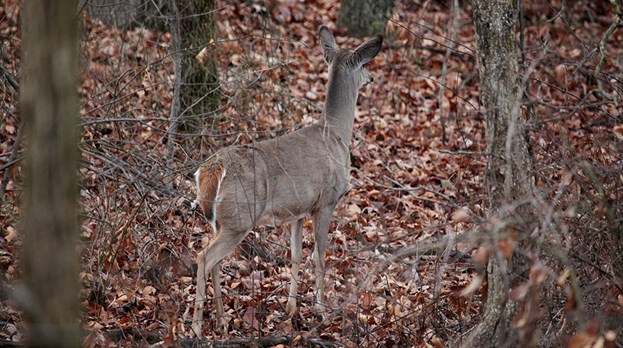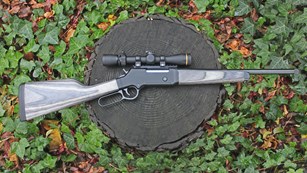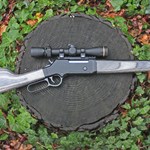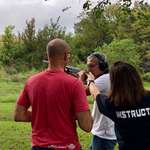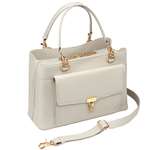
Sitting in your stand, eyes peeled and ears tuned for the flick of a tail or the patterned crunch of leaves, you’re focused on a brushy patch of woods a hundred yards away. Just as your head starts to turn to scan the scenery, you lock eyes with a deer that has already spotted you. What do they see? Is it my face? Is it the color I’m wearing? Did I move too much?
To understand how a deer visually perceives its world, you first have to understand what deer can see and how they see it. Wildlife biologist Katie Martin, who studies deer, bear and turkey for the Virginia Department of Wildlife Resources, shared with me her knowledge on white-tailed deer’s vision capabilities.
The basis of vision happens in the retina in the back of the eye. Two types of light-sensitive rod and cone cells help mammals see detail and color. Rods deal with the ability to see in low-light situations and black and white tones. Cones operate best in daylight and distinguish color. Human eyes have a higher number of cones, which is why we can see better during the day and most colors, with the exception of ultraviolet and infrared wavelengths. Deer have a lower number of cones than humans, but a higher number of rods. Therefore, they have better low-light vision, but limited color perception.
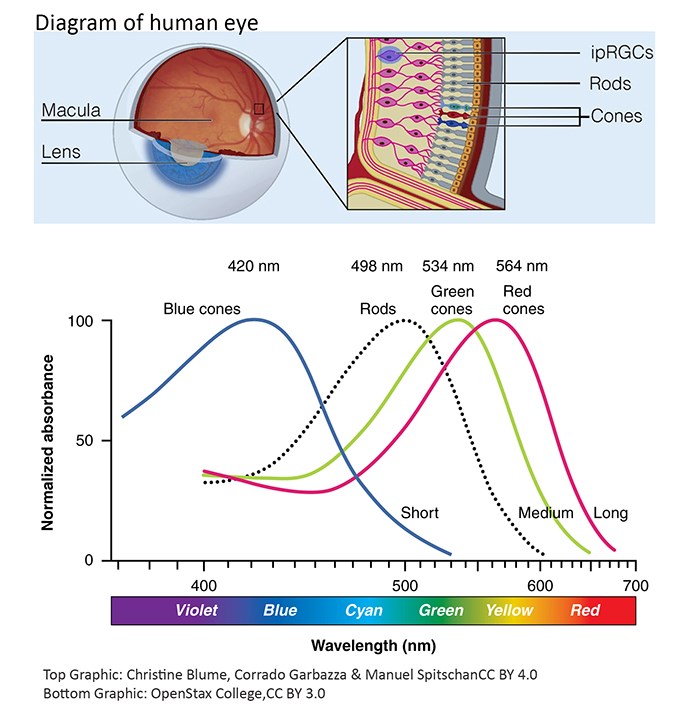
Aside from more rod photoreceptor cells, two other advantages aid in a deer’s ability to see at night. First, their pupils open wider to allow more light to enter. Martin also says, “Deer have a reflective layer in the back of their eye called a tapetum. This is what causes their eyes to shine at night.” Not only do deer absorb more light from their surroundings, but they are also able to utilize reflected light. “The tapetum acts like a mirror and reflects light that wasn’t absorbed by receptor cells when it entered the eye, basically giving a deer the ability to use the same light twice to form an image while people only get to use it once,” explains Martin.
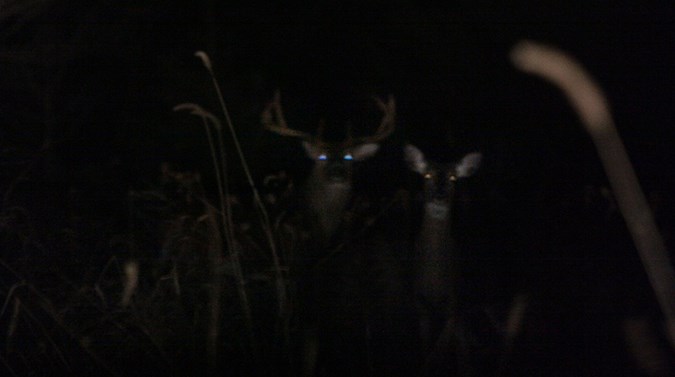
Because of a deer’s heightened low-light vision, they have developed nighttime behavioral patterns. They learn that it is safer to travel at night because they are able to see better and they notice less human activity. Deer follow their established trails and hit known food sources using the cover of darkness, finishing up their nighttime travels by dawn, by which point they are on their way to a bedding thicket.
It is a common misconception that deer only see the world in shades of gray, black and white, and thus it is repeated as an argument for wearing blaze safety colors when hunting. But in reality deer are not colorblind; they just have limited color vision.” While the rods we discussed earlier allow for black and white vision in the absence of light, to process color there are three types of cones: red, green and blue.
According to Martin, “Deer lack the red cone which equates to long wavelength colors such as red, orange and pink. While those colors aren’t invisible to deer, they are perceived differently thus making a deer basically red-green colorblind (just like some people can be). So, a deer can likely tell the difference between blue and red but not orange and red or green and red. Thus, wearing colors of green, red, orange or pink won’t make a difference as the deer can’t distinguish those colors readily, but wearing blue (like a pair of blue jeans) would be a disadvantage for a hunter.”

Right: An early morning start to a hunt as we would see it. Left: An approximate guess as to how a deer would see the same scene. Note their lack of perceiving the blaze orange color and heightened sensitivity to the blue spectrum, as well as having superior vision in low-light situations.
Deer lack an ultraviolet filter as well, aiding in their ability to see blue and violet better than humans. Martin explains that our eyes are protected from UV light with a filter that shields our retinas from harmful rays, but also limits our ability to see deep into the violet spectrum. “Blue light pours into a deer’s eye, which makes lowers the clarity but heightens their ability to see at dawn or dusk,” she says. The compromise is that they can’t see fine detail in daylight as we can.
More than colors or clothing patterns, what deer are really attuned to is movement. Martin emphasizes, “Motion is the big key; they can pick up movement quickly!”
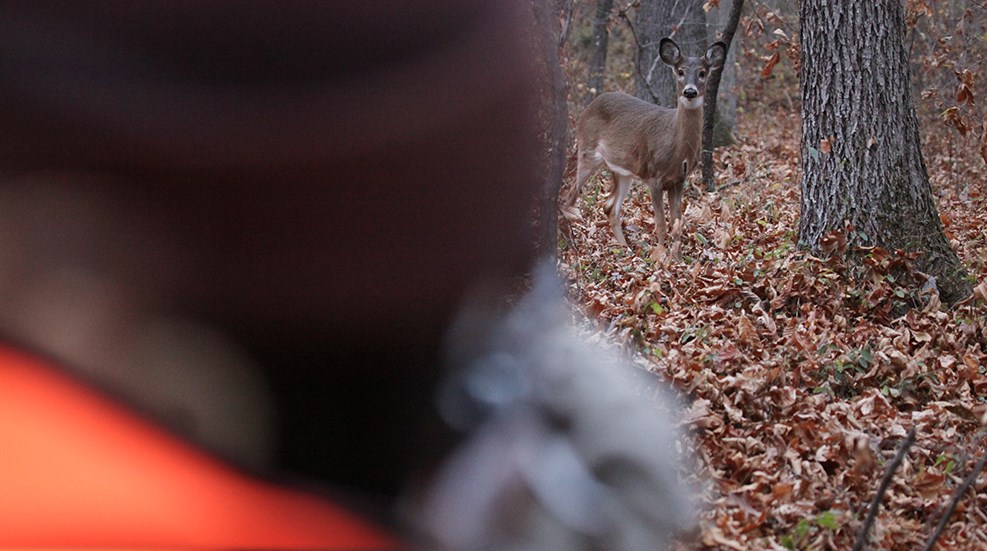
Deer process what they see much faster than humans do, in fact, two times faster than us in daylight and even faster in low light. When we spot them, our brain processes all of the detail we are seeing: Is that a deer? Is it a buck or doe? Just one? How big? When a deer sees us, or sees movement we make, instantly a huge caution signal goes off in their brain warning against a potential threat. They can immediately bound away to safety or freeze to get a better look at what that weird thing sitting over there is.
Martin estimates a deer’s visual acuity, if measured on an optical chart, would be around 20/60, compared to 20/20 for normal human vision. This means that a person with normal vision could clearly identify an object at 60 feet away that a deer would only be able to see clearly at 20 feet.

Right: A daylight woodland scene as we would see it. Left: The same scene, approximating as a deer might see it. Note how they have limited ability to see certain colors, as well as poor detail perception.
Grazing prey animals, like deer, elk, sheep and antelope, have horizontally shaped pupils. This, combined with eyes positioned on the side of their head, gives them panoramic vision and the ability to spot a threat from almost any direction around them.
Although deer can see approximately 310 degrees around, Martin says, ”They have poorer depth perception since their eyes are spaced far apart and their vision only overlaps for about 60 to 65 degrees in the front.”
Humans’ range of vision is about 180 degrees, with 120 being binocular vision, or the part that overlaps. A deer’s binocular range may be narrow, but it is sharp, which is why they don’t have any trouble fleeing through the woods.
You’ve probably witnessed how a deer stares at something, looks away, and then looks back quickly. They’re not actually looking away, but turning their head to the side to use a different part of their vision to get a better idea of what they are looking at. That front-to-side turn is to help improve their perception of the object.
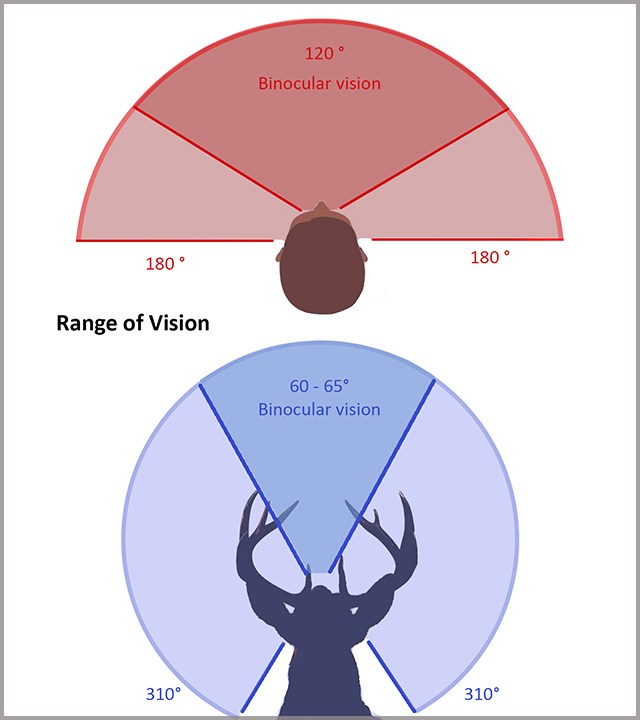
But when it comes to a deer detecting a hunter, it still all comes down to movement. Martin emphasizes, “Movement (especially at their height of 2 to 5 feet off the ground) is extremely noticeable to them. They are less able to detect movement from above (like a hunter in a treestand), but still don’t have a dance party up there!”
Martin also cautions hunters on the material of their clothes. “Synthetic fabrics can reflect white flashes of light (in the blue-spectrum) more, thus making someone easier to pick out by a deer. Soft or natural fabrics reflect less light than things made of nylon, vinyl or some plastics.”
Another point of contention is laundry detergents that have UV brightening chemicals in them to enhance clothing colors and hide stains. Since deer are able to see blue and violet wavelengths, clothing washed in such detergents may stand out to a deer, especially in low-light situations. You can check detergent labels for optical brightening agents (OBAs) or fluorescent whitening agents (FWAs) or you can use a UV light to check your gear before you head out into the woods.
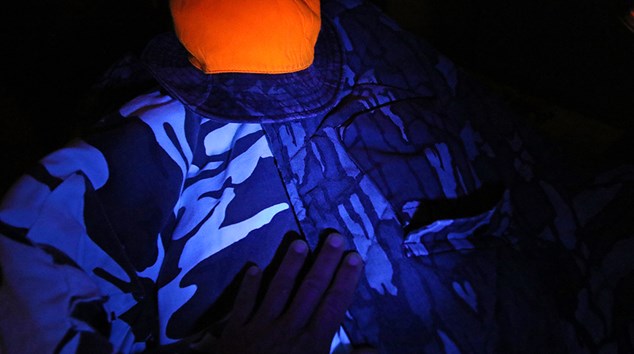
Using a UV light helps to see if there are any brightening agents in your detergents. Whites will always appear bright, as shown in the snow camo, as will blaze colors, but deer cannot see colors in the red-orange spectrum, thus the orange color does not stand out to their eyes like it does ours.
Martin says the bottom line is, “They perceive things differently and we can try to learn as much as possible about what that looks like based on their eye shape/biology but it’s only speculation to translate a deer’s color perception to that of a human.”
The best advice to prevent a deer from seeing you, is to practice being still and try to keep your movements to a minimum. Know that when they first spot you, a deer is daring you to make a move—they stomp and snort and bob their heads, trying to coax you into giving them a reason to bolt. Play the waiting game. Often times a deer standing close by will hang around long enough to for you find that opportune moment when they let their guard down or briefly pass behind a tree for you to take aim.
